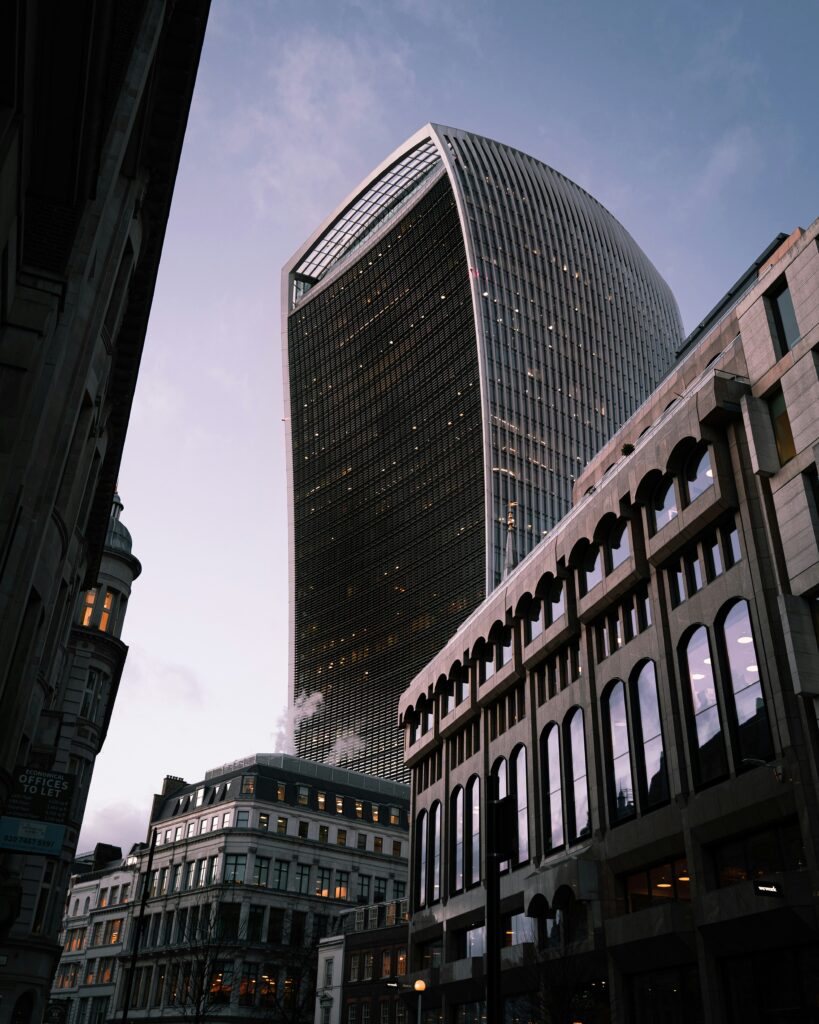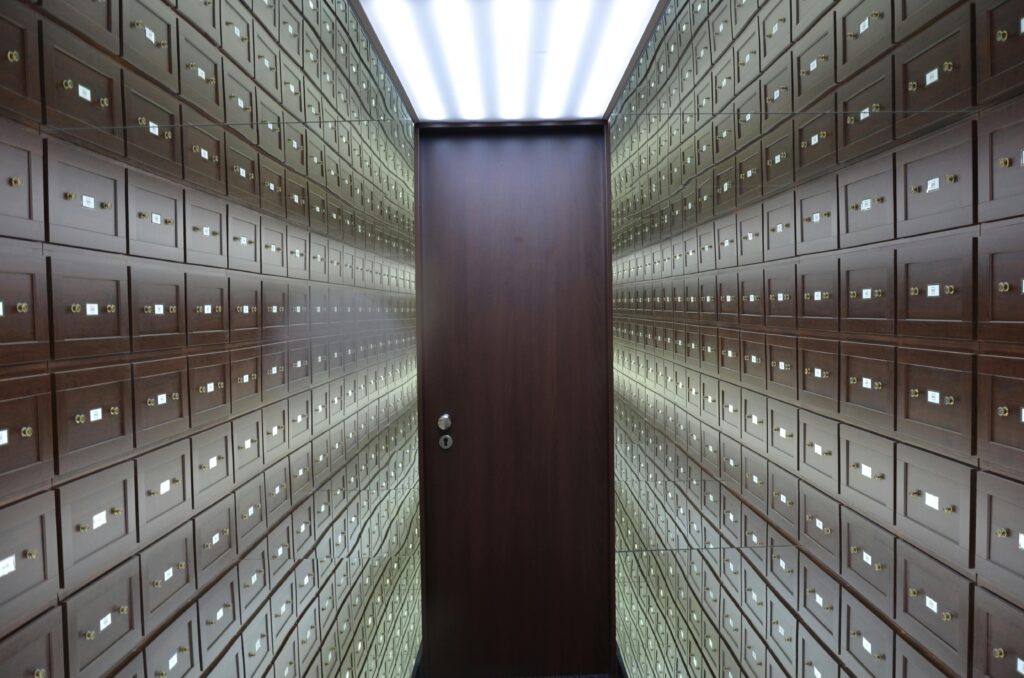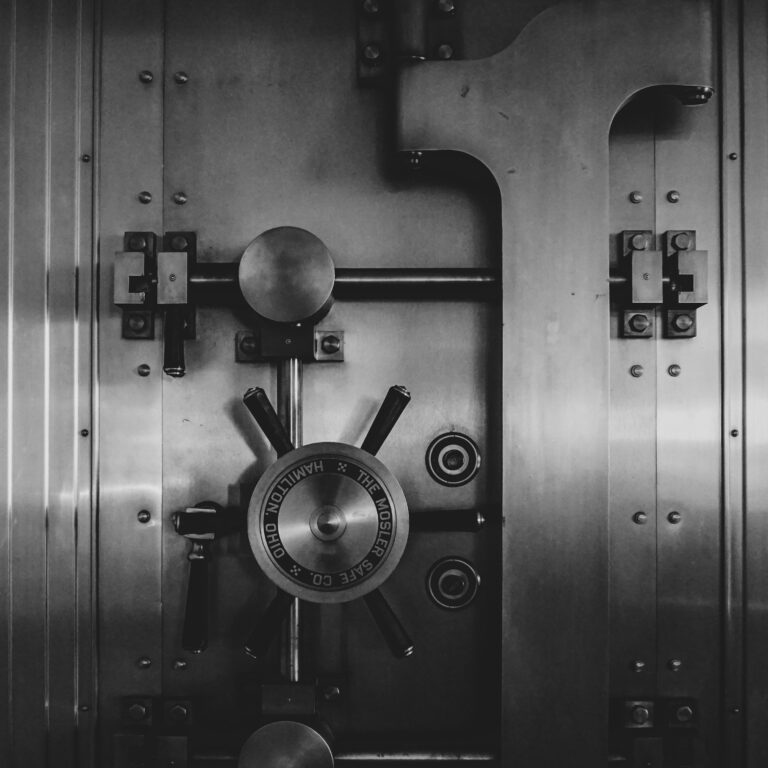Beneath the bustling streets of London, there lies an impressive network of underground bank vaults. Precious metals, valuable documents, and rare artifacts are stored safely away from prying eyes.

“If we command our wealth, we shall be rich and free; if our wealth commands us, we are poor indeed.” – Edmund Burke
Photography: Simone Mascellari
Emily Allen: Columnist
Deep below the elegantly paved streets of this smart central London district, behind brushed steel doors and layers of biometric locks, a quiet new culture of wealth has emerged.
It doesn’t announce itself with chauffeurs or champagne, parties or polo matches. There are no glossy showcases or gallery lighting. In fact, inside London’s world of private vaults, silence is everything. Here, in underground chambers sealed from risk, surveillance and sometimes even governments, the ultra-wealthy now store their most valuable assets.
For generations, bank safety deposit boxes have served as the discreet guardians of inherited tangible assets, from jewellery to stocks certificates to. Paintings.
But over the last decade, London’s wealth has been quietly migrating out of banks and into private vaults – high-security facilities that are independent from the traditional financial system.
So what is the reason behind this exodus? The answer is a mix of practicality and shifting risk perception. Most major high street banks in the UK stopped issuing new safe deposit accounts years ago, quietly withdrawing from the service as many branches closed.
Meanwhile, tightening banking compliance laws made such privacy harder to maintain. At the same time, rising burglary rates in London and growing global financial instability pushed high-net-worth families to seek out alternatives that offered stronger security and independence. Enter the modern private vault.
Vaulting used to be about storage. Now it’s about strategy.
Far from cold metal corridors, today’s private vaults are as welcoming and luxurious as the exclusive private members’ clubs that line the streets of this well-heeled district. Customers – ranging from local residents and businesspeople to visiting wealthy families – book appointments through concierge teams. They arrive in private elevators and are assured the highest level of privacy and discretion. It is traditional Swiss vaulting heritage reimagined for the luxury era.
One of the most striking examples is IBV International Vaults London, located inside the Grade II listed Stanhope House on Park Lane. Opened in 2020 in the former Barclays Private Bank premises, the site marries old-world architectural hauteur with high-spec defence systems. Its interiors, bedecked with walnut panelling, velvet seating & marble flooring, would not feel out of place in a luxury hotel, yet beyond this façade lies a fortress.
The company publicly confirms that security comprises layered biometric access (including iris and fingerprint scans), 24/7 CCTV enhanced by video analytics, seismic sensors, time-delay vault locks and ballistic-grade glass. IBV is part of an international vault network founded by South African entrepreneur Ashok Sewnarain, with additional facilities in Dubai and major South African financial hubs.
The London vault is overseen by Managing Director Sean Hoey, who previously led the safe deposit operations at Harrods – arguably the best-known luxury vault service in Knightsbridge. His role underscores a rising trend in the private security world: expertise once confined to private banking now powers a new standalone industry.
This raises the big question – what is actually stored in these vaults?
The public imagination may jump straight to gold bars and diamonds, and it’s true that precious metals do remain a major category. IBV operates a division known as IBV Gold, trading and storing investment-grade bullion for clients who want to bypass delays in central bank storage logistics. But gold is only part of the story.
Vault operators describe today’s storage habits as diverse, highly personal and occasionally surprising. Traditional items like gold bullion, heirloom jewellery and family documents still dominate, but the modern vault now caters to a far wider spectrum of assets. Investment-grade watch collections, often featuring names like Patek Philippe and Richard Mille, are increasingly stored off-site to avoid targeted theft and escalating insurance premiums.

Approximately 16,000 tonnes of gold are stored in vaults around the world. The total amount of all gold ever mined is estimated to be around 212,582 tonnes. The insurance value of the art held in the Geneva Freeport is estimated to be over $100 billion.
Photography: Jason Dent
Art collectors use vaults as temporary sanctuaries for canvases, sketches and rare manuscripts while they move between galleries, auction houses or international homes. In recent years, digital wealth has entered the vault too, with clients depositing hardware wallets containing cryptocurrency in order to keep them offline and protected from cybercrime.
Some items carry emotional rather than financial value – family wills, property deeds, first-edition books, even century-old photographs and letters are placed in safe custody as irreplaceable pieces of family heritage. And then there are the quiet signs of shifting investment culture: vaults now house fine wine, rare whisky, Hermès Birkin bags and other luxury collectibles that form part of increasingly sophisticated private portfolios.
Not everything stored behind steel doors is measured by market price, however. Alongside gold bars and investment pieces, clients increasingly secure personal legacies – family heirlooms, letters, military medals and archives that carry emotional weight across generations.
The backdrop to this phenomenon is sadly familiar: geopolitical conflict, inflation uncertainty, banking system distrust and cyber threats. The World Gold Council recorded robust private gold buying in the past two years as investors sought safe-haven assets – wealth preservation over risk exposure.
At the same time, London recorded rises in high-value thefts, including watch robberies and targeted burglaries in affluent postcodes. Private vaults offer three things banks increasingly cannot: Privacy, security and access. Clients are not subject to the operational hours of banks or potential bureaucratic delays of financial institutions. Nor are private vault providers part of the fractional banking system – what goes in the vault, stays there, unleveraged and untouchable.
Vaulting used to be about storage. Now it’s about strategy. Many ultra-high-net-worth individuals use vaults as part of wealth transfer planning, estate organisation, or offshore diversification. Crypto investors use them to store hardware wallets offline. Family offices use them as neutral territory – accessible to global heirs without going through lengthy probate delays.
This industry is expanding globally. Singapore, Dubai and Zurich have new purpose-built vault districts. London remains a hub thanks to legal stability and its status as a private wealth capital. As security technology evolves, AI-based risk detection and biometric identity protocols will likely become standard.
But at heart, vaults are old-world and old-school and as life becomes increasingly virtual and lived online, the world’s wealthiest are returning to the certainty of tangible, physical possession.
OTHER ARTICLES ON WEALTH & INVESTING














